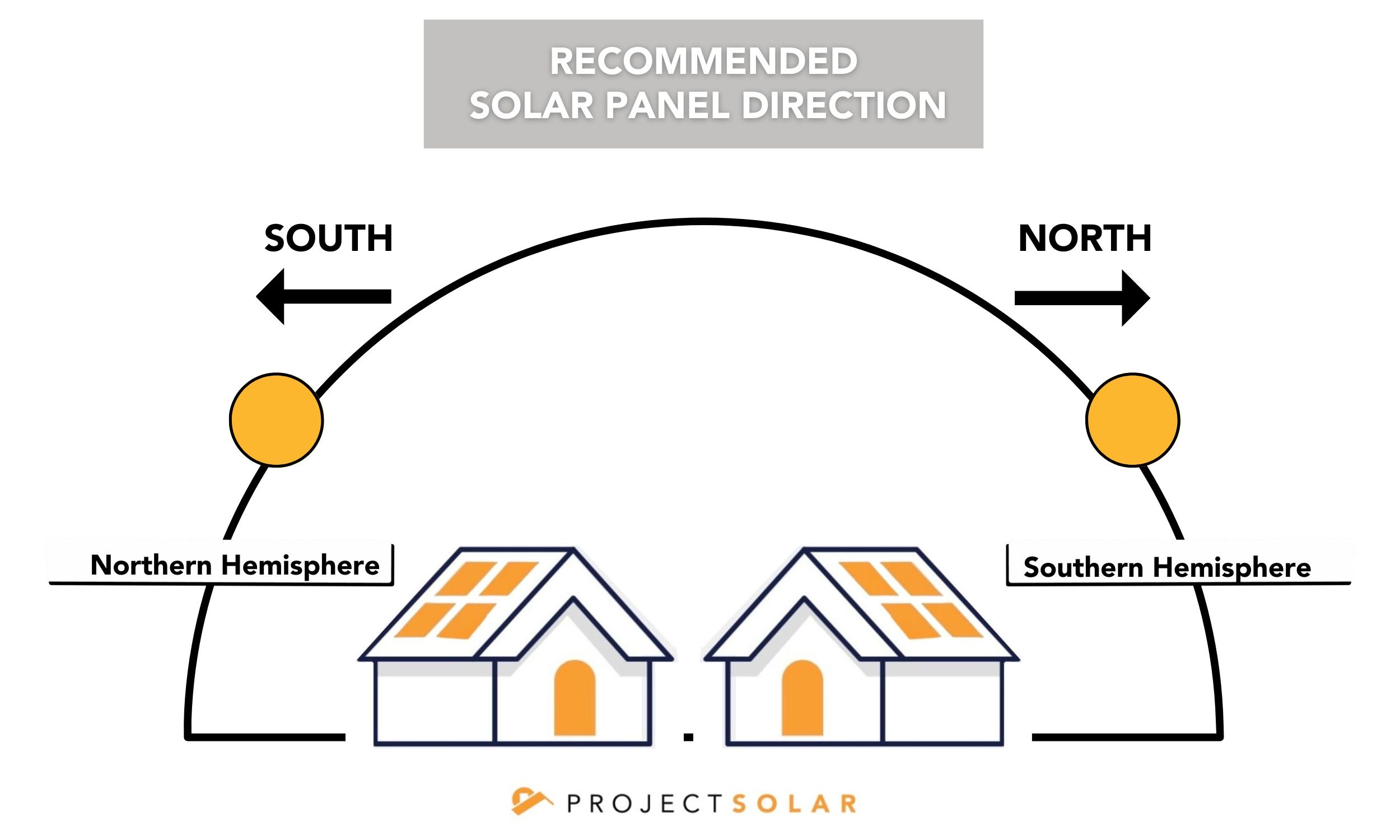What’s the Best Direction for Solar Panels to Face?
What Direction Should Solar Panels Face?
“What direction should solar panels face?" is an important question for optimal sunlight exposure. The best way to position solar panels depends on where you live. If you're in the Northern Hemisphere, it's best to face the panels southward. If you're in the Southern Hemisphere, facing them northward is more ideal. This is because the sun tends to be higher in the sky towards the south in the Northern Hemisphere, and towards the north in the Southern Hemisphere. By aligning the panels in the right direction, they can capture the most sunlight, resulting in better energy production.

You also need to think about any obstacles that could cast shadows on the panels. Buildings, trees, or even nearby hills can block the sun and affect the panel's performance. So, it's a good idea to get advice from experts or use special tools that consider shading and the sun's path to determine the best direction for your panels.
How Should Solar Panels Be Angled?
The angle, or tilt, of the panels is also important because it affects how directly the panels face the sun. The best tilt angle depends on your location. As a general rule, setting the tilt angle equal to the latitude of your home is a good starting point, which is usually somewhere between 30° - 46°. Here's a list of cities and their recommended angles:
City
Latitude
Best Angle
Houston, Texas
29.7°
30°
Portland, Oregan
45.5°
46°
Kansas City
39°
39°
Los Angeles
34°
34°
Chicago, Illinois
41.8°
42°
Charlotte, North Carolina
40.7°
41°
Baltimore
39.2°
40°
Atlanta
33.7°
34°
New York City
40.7°
41°
Salt Lake City
40.7°
41°
You can also adjust the angle of your solar panels to generate more energy during specific times of the year. This is especially important if you have a flat roof because you'll need to tilt the panels more in order to capture more sunlight. So, here's how to tilt your panels based on the seasons:
Winter: Tilt the panels to your latitude plus 15°. In winter, the sun is lower in the sky, so you should increase the tilt angle of your panels to capture more sunlight. In regions with snowfall, it's also advisable to tilt the panels more vertically to allow snow to slide off easily and prevent snow buildup.
Summer: Tilt the panels to your latitude minus 15°. During summer, the sun is higher in the sky, so you should decrease the tilt angle of your panels to maximize exposure to direct sunlight. A flatter angle helps ensure that the panels receive sunlight more directly, especially during peak hours.
Spring and Fall: Tilt the panels to your latitude. The exact angle depends on your specific location.
Which Matters More: Solar Panel Direction or Angle?
Both the direction and angle of the solar panels are important, but if we had to choose, the direction matters a bit more. Getting the direction right ensures that the panels receive sunlight for the longest period during the day, which is essential for generating more energy.
The angle of the panels also plays a role, but it's impact is slightly less significant. Adjusting the angle can help optimize energy capture during different seasons, but it doesn't have as big of an effect as the direction.
Panel Placement With Project Solar
At Project Solar, we use Aurora software, which utilizes LIDAR technology to create detailed, three-dimensional visualizations of your home and its surroundings. With this accurate representation, our designers can precisely map out your roof's layout, taking into account factors such as shading, irradiance levels, fire-code setbacks, and even your aesthetic preferences.
If you're curious about how our software precisely calculates these factors, you can find more information by reading our article "How did you decide the panel placement for my project? Can I have input on panel placement?".